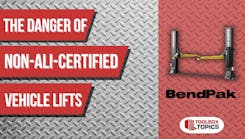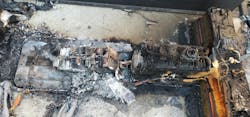asTech releases first Rules Engine case study
asTech released its first industry case study that illustrates how its patented and proprietary Rules Engine determines a cost-effective and comprehensive scan tool that reads all of a car’s OEM modules correctly – versus those that don’t – down to the year, make, model, and trim.
To accomplish this, asTech engineers performed tens of thousands of vehicle scans against the active car parc and engaged in extensive research to identify which top aftermarket tools performed the same as OEM tools.
During the research and development phase of the Rules Engine, asTech technicians identified inconsistencies between the OEM diagnostic tool and a leading aftermarket tool — referred to as “Brand X” — when scanning a 2017 Kia Rio.
This case study demonstrates how the Rules Engine can help prevent a repairer from missing potential safety issues on a vehicle.
What asTech’s technicians did
asTech technicians post-scanned a repaired 2017 Kia Rio with the Hyundai/Kia OEM diagnostic tool, which identified three diagnostic trouble codes (DTCs). One of these codes called for the replacement of an airbag safety module. Immediately after, technicians scanned the same vehicle with the Brand X aftermarket tool to compare the results.
What the aftermarket tool did not find
Brand X’s aftermarket tool failed to find two of the three DTCs, and most importantly, it cleared the airbag module as if no faults existed. It could not be trusted to validate that the vehicle had been repaired properly and returned to OEM specifications for this specific year, make, model, trim.
A repairer who only used Brand X’s aftermarket tool would clear this Kia as safe, despite the presence of a potentially faulty airbag module in need of repair, which could result in an unsafe operating environment for the owner of the vehicle.
How the asTech Rules Engine would help
The Rules Engine recommends a choice in scans to repairers for each specific (down to the trim level) vehicle they’re working on:
- A remote OEM diagnostic scan using asTech’s patented technology.
- An “OEM Compatible” aftermarket scan performed locally with the asTech tool. This is a scan that’s been verified to provide results that are equivalent to an OEM Tool scan.
For the 2017 Kia Rio, the Rules Engine would recognize that Brand X’s aftermarket tool would not correctly identify all DTCs. For that reason, the Rules Engine wouldn’t recommend it as a safe, OEM Compatible scan for this year, make, model, trim.
Instead, the Rules Engine would offer a different, verified OEM Compatible aftermarket scan, or a remote OEM diagnostic scan. Either way, the DTC for the airbag module would be identified.
Going forward, Repairify will continue to augment, edit, and update the Rules Engine based on ongoing research being conducted by its engineers across the country. This database will represent the most comprehensive dataset for comparison analysis on a global scale. Individual vehicle testing results will be made available for review to customers based on need.


